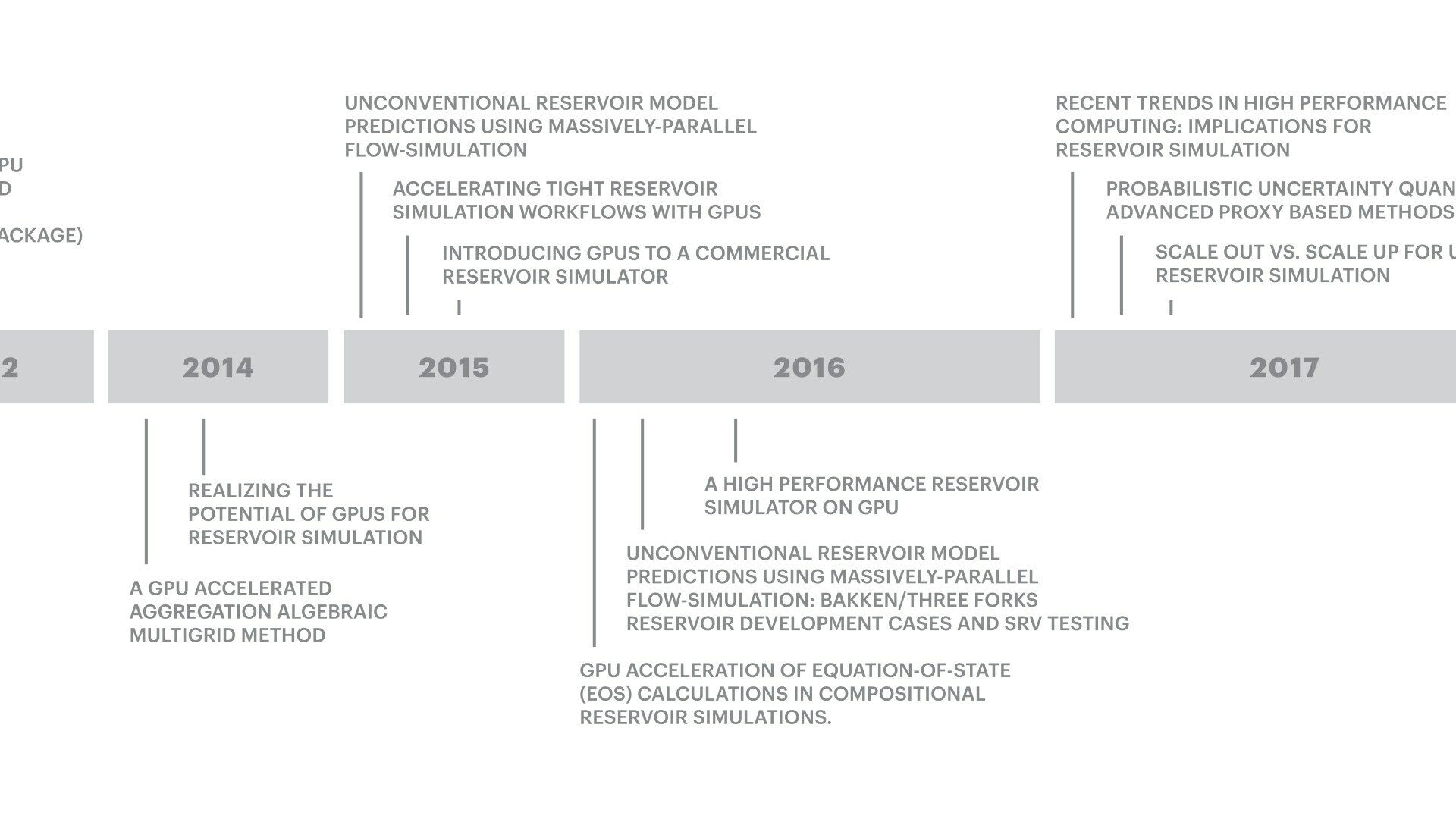A Decade of Innovation on GPUs for Reservoir Simulation
Our publications and talks, beginning a decade ago in 2011, are marked by seminal papers highlighting the power of this hardware platform for reservoir simulation.

Our publications and talks, beginning a decade ago in 2011, are marked by seminal papers highlighting the power of this hardware platform for reservoir simulation.

Posted in: ECHELON Software
2021 marks SRT’s tenth year of innovation, technology development and publication on the use of Graphical Processing Units’ (GPUs) for reservoir simulation. Well back in 2011, SRT realized the potential of GPUs for general-purpose computing and in particular for the solution of discretized partial differential equations. Our publications and talks over the past decade are marked by seminal papers highlighting and demonstrating the power of this hardware platform for subsurface flow simulation.
‘Accelerating Reservoir Simulation with GPUs,’ was our first publication presented by our CTO, Ken Esler at the 73rd EAGE Conference and Exhibition, May 2011. While other companies in the industry were focusing on multi-core cluster codes, our team was setting a course to develop ECHELON, the fastest reservoir simulation software in the world run entirely on NVIDIA GPUs.
In 2014 SRT published ‘Realizing the Potential of GPUs for Reservoir Simulation’ in Computers and Mathematics with Applications 68. By this point in time the exceptional performance results published by SRT and our customers had demonstrated the capabilities that GPUs offered to an initially skeptical industry and served as a wake-up call to investigate alternative computational hardware strategies.
The NVIDIA GPU Technology Conference 2015, or NVIDIA GTC, was a platform for us to present our paper with Schlumberger, ’Introducing GPUs to a Commercial Reservoir Simulator.’ The work described efforts to integrate GAMPACK, SRT’s GPU based algebraic multigrid solver into Intersect for use in thermal simulations.
In 2017, ‘Scale Out vs. Scale Up for Ultra-Scale Reservoir Simulation’ was presented at the Third EAGE Workshop on HPC for Upstream in Athens. This was a pivotal year for SRT as discussions had begun around a cooperative development agreement with the Italian energy company Eni, which would result in a powerful partnership to mature ECHELON.
Our most recent publication with Eni, ‘A Graphics Processing Unit–Based, Industrial Grade Compositional Reservoir Simulator’ appeared as part of the SPE Reservoir Simulation Conference 2021. It describes our fully implicit and adaptive implicit compositional formulation. The results presented demonstrate speed, stability and scaling. In addition, ECHELON exhibits a unique linear scaling behavior for both performance and memory usage with number of components in fully implicit modeling. Designing for GPU from inception yields higher performance and significantly better memory usage than approaches taken by our competitors.
Realizing the computational power of GPUs, as demonstrated convincingly by ECHELON’s performance, other simulators, both in-house and commercial, are now following by porting their multi-core codes to GPU or building entirely new codes. Examples include: “A Massively Parallel Reservoir Simulator on the GPU Architecture,” U. Middya et. al. (Saudi Aramco) and “Adding GPU Acceleration to an Industrial CPU-Based Simulator, Development Strategy and Results”, H. Cao et. al. (Total), both delivered at the recent SPE Reservoir Simulation Conference (RSC21). We welcome these developments as an endorsement of our strategic vision for high-performance technical computing and the foundational development work that we began a decade ago.
The publication timeline we have created below shows a full list of our publications as does our resources page.

Emily Fox
Emily Fox is Stone Ridge Technology's Director of Communication.